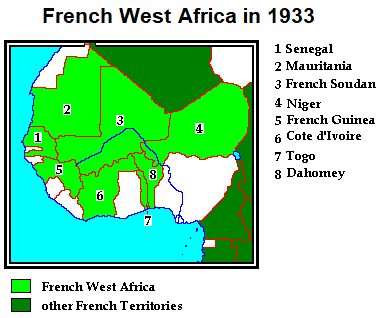
French West Africa. Information.

 Dahomey Dahomey
|
 Upper Volta Upper Volta
|
 Guinea Guinea
|
 Ivory Coast Ivory Coast
|
 Niger Niger
|
 Mauritania Mauritania
|
 Mali Mali
|
 Senegal Senegal
|

 |
French West Africa. Information. |
||||||||||||
 |
|||||||||||||
See also:
|
|||||||||||||

|
|||||||||||||